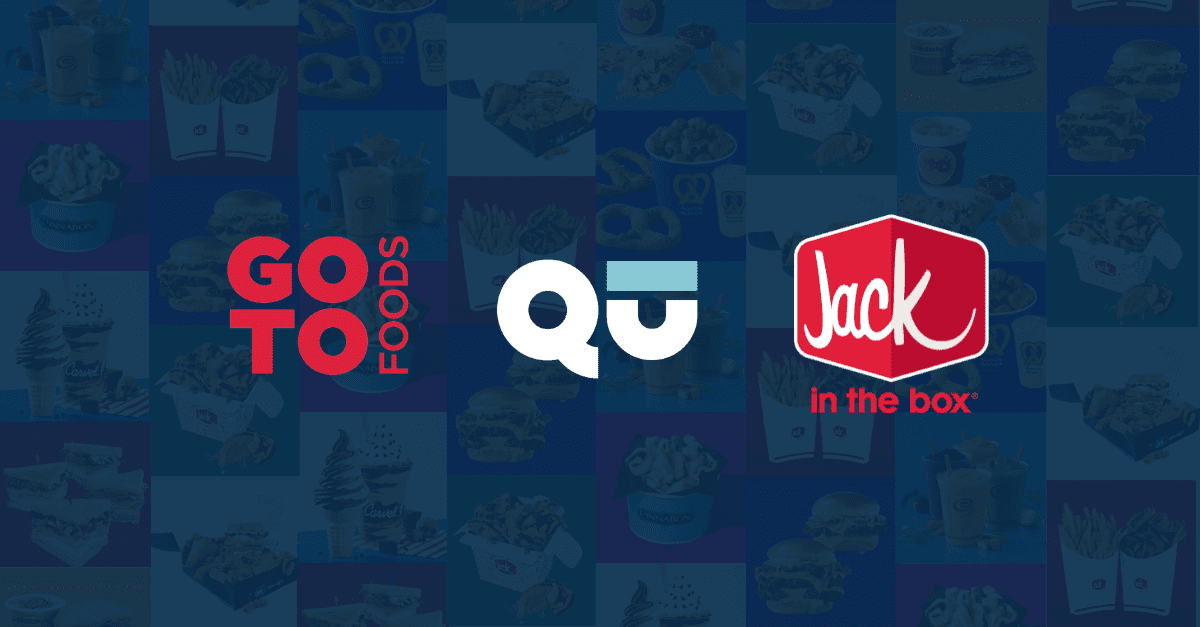The Rise of Platforms in the Restaurant Industry: More Than Just a Buzzword
The “platform” term has become more mainstream in the restaurant industry of late, as growing brands seek better integrated solutions with less complexity and technical debt. Along with the promise of streamlining operations, data, and guest experiences, platforms are poised to be the difference maker for large enterprise brands that have struggled to manage channel proliferation with dated tech and limited innovation.
But how exactly do platforms help restaurants, and how are industry leaders actually leveraging platforms today?
Two prominent restaurant brands, Jack in the Box and GoTo Foods, are at the forefront of this technological shift. They’re both using a Unified Commerce Platform to evolve their business and reinvent their technology strategy from the ground up. At this year’s Restaurant Leadership Conference (RLC), Doug Cook, the CTO and SVP at Jack in the Box, and Nandu Gandhi, Chief Technology & Data Officer at GoTo Foods, joined Qu and Informa on stage to discuss how they’re using platforms to drive their businesses into the future more efficiently.
Here are six key takeaways from their discussion:
1. How to Define Unified Commerce: A Single Data-Driven Foundation
There are different ways of defining platforms but when talking about a unified commerce platform we’re referring to a data-driven foundational framework that unifies the ordering journey across brands, channels, and systems. The result: reduce complexity, while increasing speed and innovation.
According to Cook, “a unified commerce platform connects front-end systems and channels with your back-end systems through a single foundation, or platform.” Gandhi added that “…the core principle [of unified commerce] is providing customers with a friction-free experience, regardless of which channel they interact with.”
Both leaders agree: this approach solves a fundamental problem— unifying data at the foundational layer. As the restaurant industry evolves, brands need technology that can scale rapidly and respond to new opportunities in hours or days, not weeks or months.
The big benefit of a Unified Commerce Platform lies in their ability to reduce complexity. Qu’s platform allows for unified menu management across all channels, from third-party delivery sites to in-store kiosks. When a change is made, it’s instantly pushed to every system, simplifying operations and ensuring consistency.
The two leaders are most encouraged by platforms’ ability to expand franchisees’ offerings around delivery, catering, kiosks, kitchen display systems and digital menu boards, and future innovations.


2. Stability is Job #1
Paramount to success for any restaurant is stability. Stability is crucial for maintaining uninterrupted operations – the top priority for franchisees and store managers. It ensures that technology facilitates, rather than hinders, every guest interaction. And most importantly, transactions and sales can flow unencumbered. When systems are down, everyone suffers – guests, team members, and operators!
“I want our franchisees to be able to operate their restaurant. I call it uninterrupted operations. That’s the number one job that I have… making sure that with every single guest that our franchisees are interacting with, the technology is not in the way,” says Cook.
Stability facilitates control and powerful transaction speeds. Stability gives your teams and guests confidence. Stability is the cornerstone of responsible technology builds. At Qu, stability is one of our core values.


3. Driving Digital Growth
Both Jack in the Box and GoTo Foods have set ambitious goals for growing their digital business. Jack in the Box aims to push digital sales to 20% by 2026, while GoTo Foods seeks to expand across various digital channels, including first-party apps, websites, and target marketplaces.
Doug Cook, who joined Jack in the Box in 2023, emphasizes the importance of controlling your technology destiny. The company’s previous reliance on third-party platforms limited their ability to innovate. With their new Unified Commerce Platform, they’re poised to accelerate new ideas and business opportunities that they couldn’t do before.
“Food lockers, intelligent ordering, robotics, automation, and other opportunities – none of it is possible without a unified tech stack and platform that can enable it,“ said Cook.
Similarly, GoTo Foods recognized the need for a single platform that could bring unique experiences to life for each of their diverse brands, including Auntie Anne’s, Cinnabon, Carvel, Jamba, McAlister’s Deli, Moe’s Southwest Grill and Schlotzsky’s.


4. Overcoming Fragmentation with Powerful APIs
An integrated, flexible API approach addresses a common pain point in the industry: fragmentation. By consolidating systems, restaurants can streamline operations and create a more cohesive tech ecosystem.
“Our platform is absolutely vital. I would encourage all of those exploring POS systems to look at the architecture. The API integration layer, to me, is the absolute secret sauce. We can’t do anything we’re trying to do – whatever it is – without that,” said Cook.
“I look at the platform as the restaurant operating system. If you have the right operating system in place, you can build the right connections to your digital dining boards, your drive-in, your kiosks, your back-end solutions, your payment providers…everything is connected.” says Gandhi.
A Unified Commerce Platform is the core restaurant operating system, according to Gandhi. And at the root of that—and the solution for fragmentation—is flexible APIs built on lighter, open architectures that leverage containerization.
This approach enables quick integration of new functionality and channels with reduced development effort giving brands streamlined administration, faster implementation of changes, agile development opportunities, and scalable tech for future innovations.
“I look at the platform as the restaurant operating system. If you have the right operating system in place, you can build the right connections to your digital dining boards, your drive-in, your kiosks, your back-end solutions, your payment providers…everything is connected.” says Gandhi.
5. Real-Time Data Changes Everything
Access to real-time data can completely change how restaurants operate. Operators now need instant access to sales and inventory data, down to individual ingredients and their expiration dates. This information, when readily available in apps like Notify, enables quick, data-driven decisions without the need for time-consuming processes and human intervention.
“You can’t even start to dream about adding anything new unless you have a common data platform that enables you to do all the things you want to do,” said Gandhi.
Surfacing real-time data allows restaurants to dynamically adjust wait times for online orders, balancing the needs of delivery drivers with those of walk-in customers, run dynamic promotions, adjust pricing and availability, make more informed labor decisions based on sales data… and much, much more.
“I need to have real-time access to sales and inventory data down to the ingredients and the expiration date of that particular product. I need to know what promotions are running at any given point in time. I need to be able to make a real-time decision that doesn’t involve a human because … we don’t have the time,” Gandhi added.
Cook noted that at Jack in the Box… “We want to control the experience … and the connective tissue is our ability to get data in and out of the POS platform, it is absolutely vital.”
6. Challenging the "High Cost" Myth
Both Cook and Gandhi emphasized the importance of considering long-term benefits when investing in a Unified Commerce Platform. The cost of maintaining multiple fragmented solutions across various channels can quickly add up.
“Yes, technology is expensive… You have solutions for everything and every new channel that’s popped up. Next thing you know, you have a fragmented set of solutions across every channel. And if you add those 10 components together, your cost is high.
If you take a step back and say, "Well, can I take a different approach to this?" The initial number might be higher, but if you do the math over a long period of time, you realize it's actually more cost-efficient and you can continue to grow your business because you no longer have bespoke situations,” explained Gandhi.
By taking a holistic approach, restaurants can achieve greater cost efficiency over time. The right platform doesn’t just reduce costs – it helps grow the top and bottom line while future-proofing the business for upcoming trends and technologies.
Gandhi continued: “It’s not just a matter of what you’re paying out, it’s also how it’s going to help grow your top line, your bottom line, and how it’s going to make itself future-ready. What is next around the corner? If you have the fundamentals in place, you have a set of microservices in place to do certain things, it’s a matter of stitching them together to bring to life the next experience.”
As Jack in the Box and GoTo Foods demonstrate, adopting a Unified Commerce Platform is more than just a technological upgrade – it’s a strategic decision that can reshape a restaurant’s entire approach to business.
By providing stability, real-time data, and the flexibility to innovate, these platforms are helping leading brands navigate the complex landscape of modern restaurant operations and position themselves for future success.

